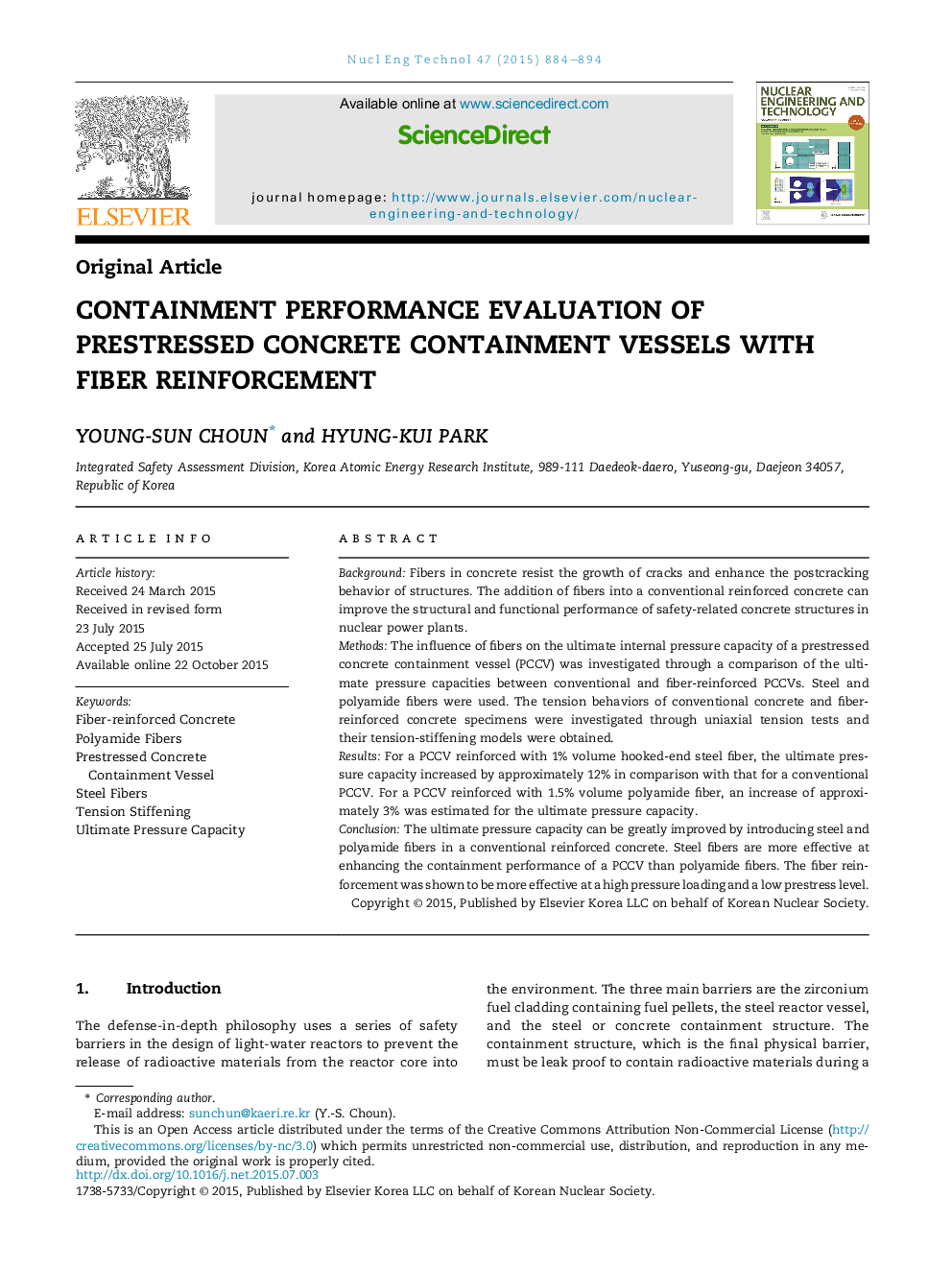| Article ID | Journal | Published Year | Pages | File Type |
|---|---|---|---|---|
| 1740068 | Nuclear Engineering and Technology | 2015 | 11 Pages |
BackgroundFibers in concrete resist the growth of cracks and enhance the postcracking behavior of structures. The addition of fibers into a conventional reinforced concrete can improve the structural and functional performance of safety-related concrete structures in nuclear power plants.MethodsThe influence of fibers on the ultimate internal pressure capacity of a prestressed concrete containment vessel (PCCV) was investigated through a comparison of the ultimate pressure capacities between conventional and fiber-reinforced PCCVs. Steel and polyamide fibers were used. The tension behaviors of conventional concrete and fiber-reinforced concrete specimens were investigated through uniaxial tension tests and their tension-stiffening models were obtained.ResultsFor a PCCV reinforced with 1% volume hooked-end steel fiber, the ultimate pressure capacity increased by approximately 12% in comparison with that for a conventional PCCV. For a PCCV reinforced with 1.5% volume polyamide fiber, an increase of approximately 3% was estimated for the ultimate pressure capacity.ConclusionThe ultimate pressure capacity can be greatly improved by introducing steel and polyamide fibers in a conventional reinforced concrete. Steel fibers are more effective at enhancing the containment performance of a PCCV than polyamide fibers. The fiber reinforcement was shown to be more effective at a high pressure loading and a low prestress level.
